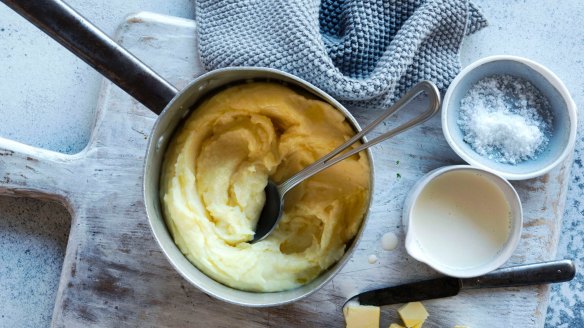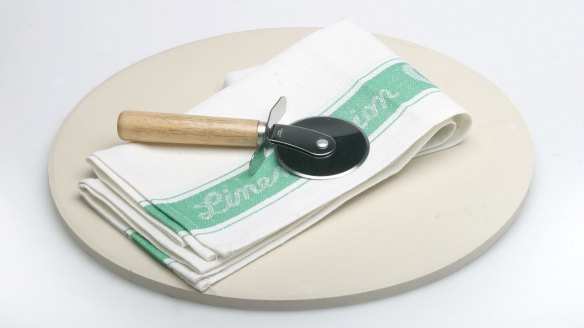How to make perfect mashed potatoes

How do I get perfect mashed potatoes? A. Kelly
Depends what you mean by perfect. Some people like fluffy mashed potatoes, others prefer creamy – a few even like Deb instant mash, or so I am told. If you like fluffy mashed potatoes, start with potato varieties high in starch such as a russet or king edward. Peel and cut into 2.5-centimetre cubes, and rinse well. Place in a saucepan of cold water – this helps cook potatoes more evenly and strengthens some of the pectins. Cook until just done, drain, rinse once more, drain and then pass through a ricer. Add butter, some hot milk, salt and pepper and bring together with a rubber spatula. If you like your potatoes creamy, use a medium starch potato like desiree. Peel, dice and boil until just soft enough to pierce with a skewer easily with no resistance. Drain, pass through a ricer and whisk on high speed with the paddle attachment in a stand mixer adding melted butter, cream, salt and pepper and perhaps a little chicken stock. Never try to make mashed potatoes in a blender or food processor. You'll break up the starch formation and create glue.

Are baking stones worth the money? T. Righetti
Yes. As long as they don't cost an arm or leg. Basically a baking stone, or pizza stone, is a block of heat-retaining mass made from stone or ceramic sitting in the oven. It's placed in a cold oven on the lowest rack and allowed to heat for at least 30 minutes. The stored heat is soaked up by the cold dough, causing protein and sugar in the flour to caramelise and the carbon dioxide in the dough to expand rapidly, making the loaf rise.
Stones create really good crust on the bottom of a loaf of bread. They also help create crusty pizza bases. A mate of mine uses a bluestone paver he bought at Bunnings for under $15. The only trouble is every time he bakes a loaf of bread he has to crowbar the paver out of the front lawn. He's a tight bastard.
We're being told to cut down on sugar. Can I make jam safely while reducing the sugar? L. Kruger
Sugar is a killer. Literally. Make a 50 per cent sugar solution, drop a frog in it, and the sugar will suck the moisture from the frog, killing it.* That's what jam is. A 50 per cent sugar solution, with the other 50 per cent being fruit. Sugar kills bugs. Simple. That's why jam doesn't go off. Yes, you can make jam with much less sugar, but it won't last nearly as long and will need to be refrigerated. You also won't get the same jelly-like set but it still will be delicious. Try 200 grams of sugar to every kilogram of fruit and cook in the same manner. Pour hot into sterilised jars and seal immediately to create a vacuum seal. Once opened, your low-sugar jams should keep in the fridge for two weeks. *Please don't try this at home. It is simply an illustrative example and not meant to be taken literally.
Correspondence
Last week we gave a recipe for chinotto cordial. Chinotto being of course a type of citrus fruit. MW Junk (we assume not their real name), asked the question "where does the zest go?" He was, of course, referring to the fact that I omitted the zest from the recipe. For those wondering, add the zest with the juice and sugar and carry on as instructed.
Send your vexing culinary conundrums to brainfood@richardcornish.com.au or tweet to @realbrainfood.
Appears in these collections
- More:
- Food
- Brain food
